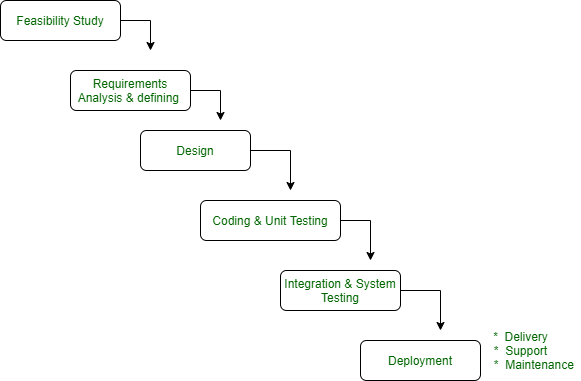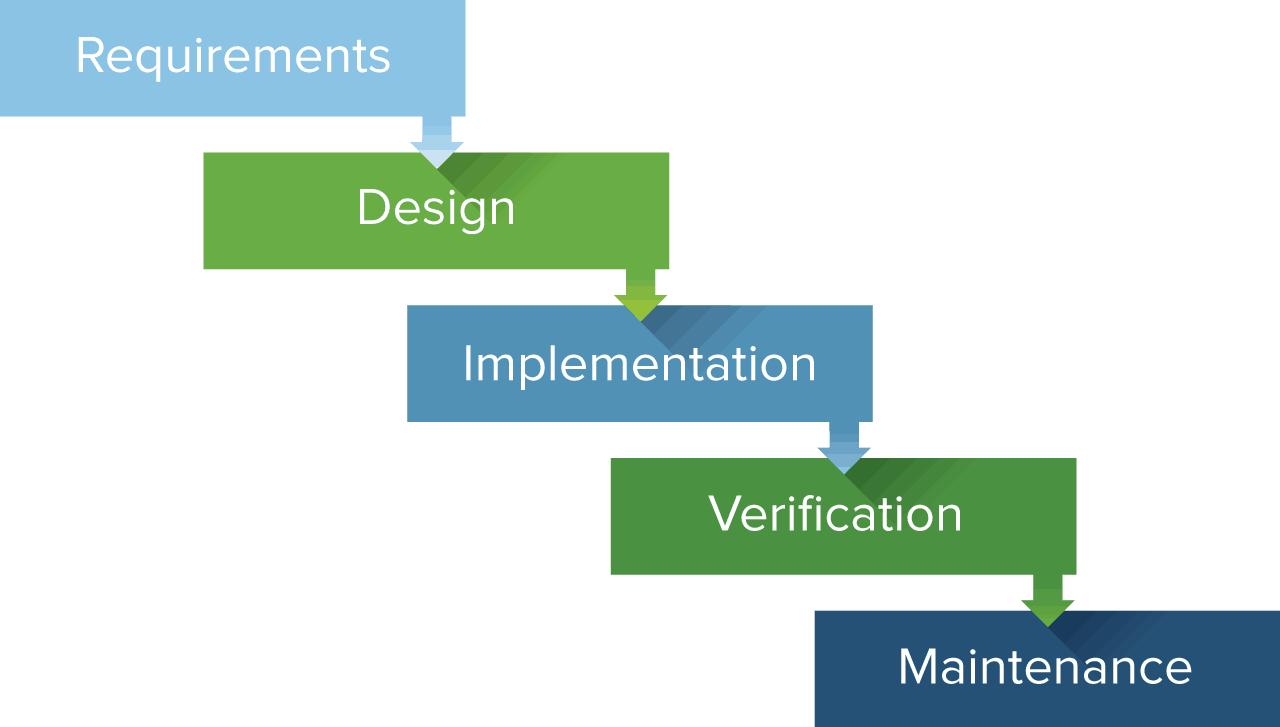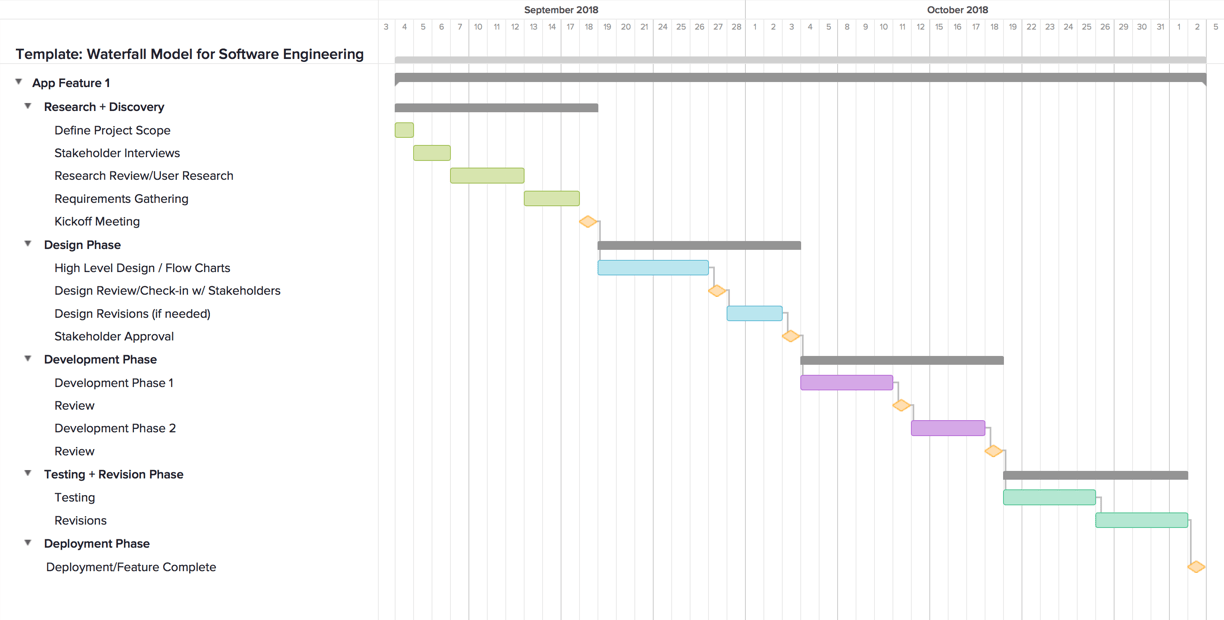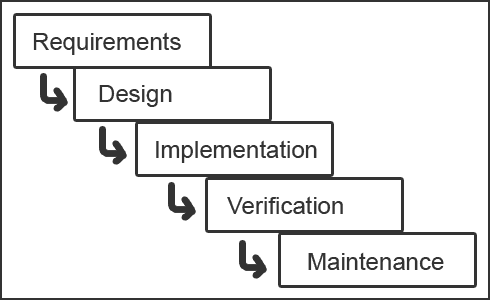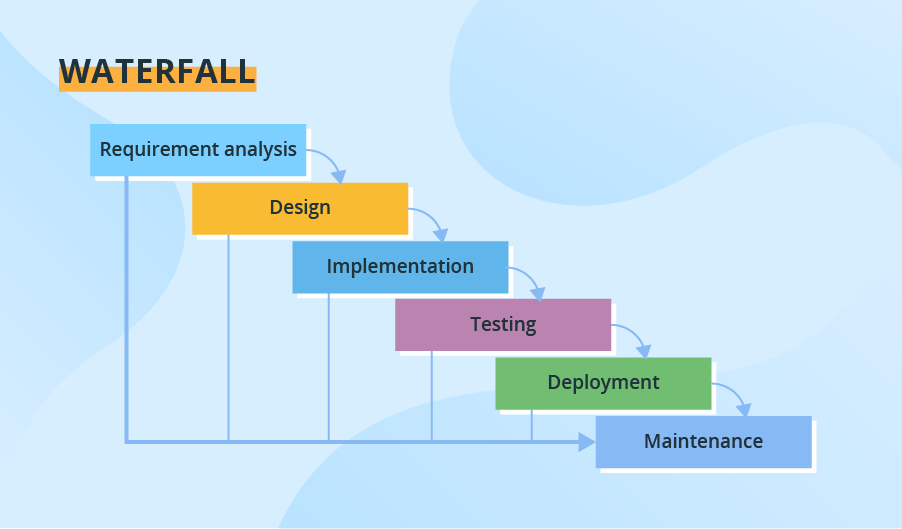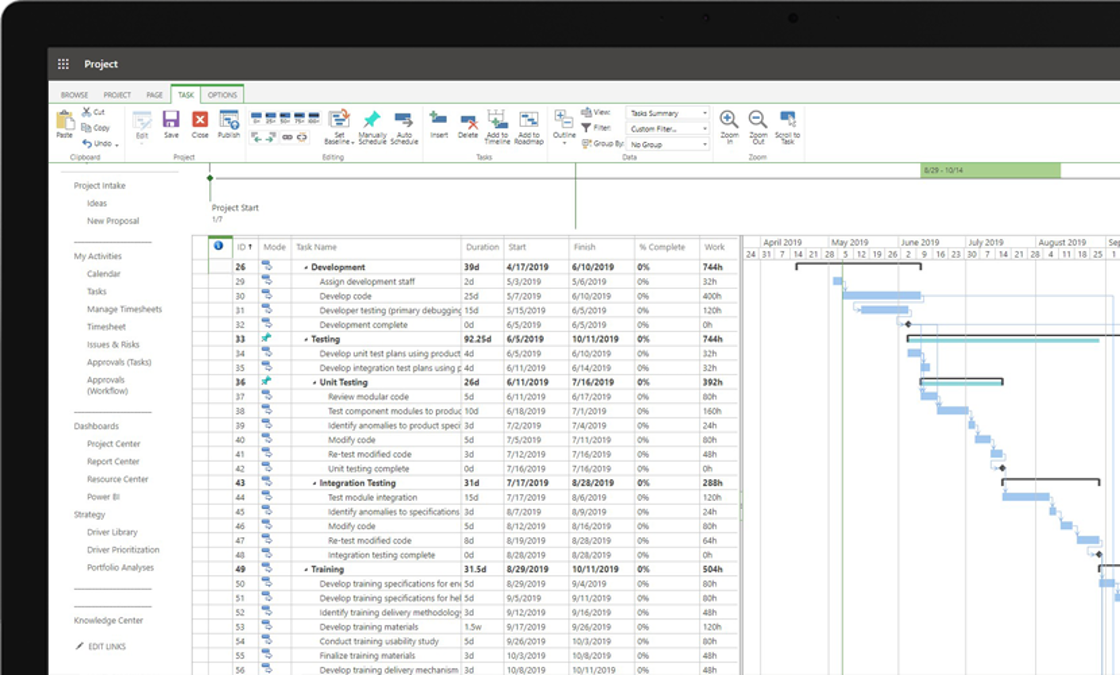The waterfall model is a software development process that follows a linear, sequential approach. This means that each phase of the project is completed before moving on to the next phase, and there is little or no overlap between phases. The phases of the waterfall model include planning, analysis, design, implementation, testing, deployment, and maintenance.
One example of the waterfall model in action is the development of a new mobile app. The first phase of the project would be planning, in which the team determines the scope and goals of the project, as well as the resources and timeline needed to complete it.
The second phase, analysis, involves gathering and documenting requirements for the app. This may involve conducting user research, gathering feedback from potential customers, and defining the features and functionality of the app.
Next, the team enters the design phase, in which they create a detailed plan for how the app will be built, including the user interface, databases, and any necessary integrations.
The implementation phase is when the actual coding of the app takes place. This may involve multiple rounds of coding, testing, and debugging to ensure that the app is functional and meets the requirements set forth in the analysis phase.
Once the app is complete, it moves on to the testing phase, in which it is thoroughly tested to ensure that it is stable, user-friendly, and meets all of the necessary requirements.
Finally, the app is deployed and made available to users, and the maintenance phase begins. This includes fixing any bugs that are discovered, as well as adding new features or updates to the app as needed.
Overall, the waterfall model is a structured and organized approach to software development that allows for clear communication and progress tracking throughout the project. It is well-suited for projects with well-defined requirements and a clear end goal, and is often used for projects where the end product is a physical product, such as a piece of software or a mobile app. However, it is not as well-suited for projects that are more flexible or have requirements that may change over time, as it does not allow for much iteration or adjustment once a phase has been completed.
